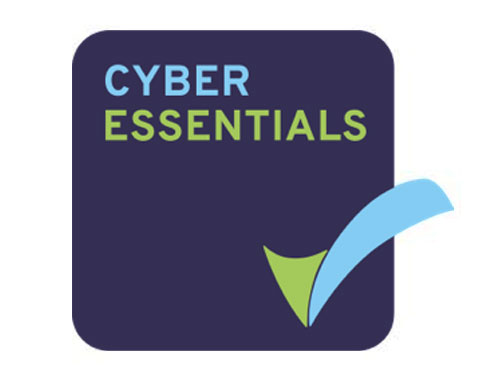Agility. Stability. Cost. Impact.
Contract vs Permanent:
Making the Right Microsoft Hire
Choosing between contract and permanent isn’t a simple hiring choice, it’s a business-critical decision. Your selection affects how quickly you deliver, how efficiently you scale, and the value your Microsoft platforms provide over time.
Start With the Big Picture
- Do you need results faster than perm hiring allows?
- Is this role about specialist skills for a fixed project?
- Is there uncertainty in budget, workload, or headcount limits?
- Will the funding come from Opex or Capex?
If yes, contractors are often the smarter solution. If no, permanents may create more lasting value.
The Hiring Model Decision Flow
What’s driving the hire?
Urgent Microsoft delivery
Contract
Long-term capability
Permanent
How long is the need?
Up to 24 months
Contract
Indefinite
Permanent
How specialist is the skillset?
Niche Microsoft expertise
Contract
Broad Microsoft support roles
Permanent
How fast must they deliver?
Productive from day one
Contract
Ramp-up acceptable
Permanent
What’s the resourcing landscape?
Gaps, peaks, freezes
Contract
Embedding strategy or ownership
Permanent
What’s the funding approach?
Opex
Contract
Capex
Permanent
Rate Benchmarking, Not Guesswork
Contractor rates vary by skillset, location, and urgency. With Tenth Revolution Group, you get:
Live benchmarking across cloud, CRM, ERP, and data markets
Rate comparisons by geography and model (remote, hybrid, onsite)
Guidance on competitive positioning to secure the right specialist fast
Side-by-Side: Contract vs Permanent
| Factor | Contract | Permanent |
|---|---|---|
| Time to hire | Fast (days–weeks) | Slower (weeks–months) |
| Time to productivity | Immediate | Variable |
| Flexibility | High (scale up/down) | Lower |
| Retention | Extensions possible | Stronger long-term potential |
| Total cost | Higher day rate, no overhead | Lower salary, higher overhead |
| Compliance risk | Manageable with right setup | Low |
Contract
| Time to hire | Fast (Days-weeks) |
| Time to productivity | Immediate |
| Flexibility | High (scale up/down) |
| Retention | Extensions possbile |
| Total cost | Higher day rate, no overhead |
| Compliance risk | Managable with right setup |
Permanent
| Time to hire | Slower (weeks-months) |
| Time to productivity | Variable |
| Flexibility | Lower |
| Retention | Stronger long-term potential |
| Total cost | Lower salary, higher overhead |
| Compliance risk | Low |
When to Choose Contract
- Critical Microsoft deadlines or milestones
- Expertise your in-house team can’t provide
- Delayed FTE approvals
- Unstable or fluctuating workloads
- Teams under resource strain
- Need for short-term agility
When to Choose Permanent
- Building internal Microsoft expertise and ownership
- Long-term leadership roles
- Embedding culture, retention, and loyalty
- Budget and time available for onboarding
Contractor Costs: Understanding True Value
Contractors don’t need culture decks or six-week induction plans. They need clarity, access, and accountability.
Done right, onboarding accelerates delivery. Done wrong, it wastes time, money, and trust.
Contractor Costs: Looking Past Day Rates
Contractors may appear costly upfront, but the real measure is impact per dollar spent.
Their rates reflect:
- Immediate availability
- Proven project delivery history
- Reduced risk of bad hires
- Flexibility to disengage when work is done
Example:
A perm Dynamics developer at $85K may take 3 months to hit stride. A contractor at $650/day could deliver the same release in weeks — cutting time-to-value significantly.
Hidden Costs of Permanent Hiring
Permanents bring ongoing expenses:
- Benefits, insurance, taxes, pensions
- Paid leave
- Onboarding, tools, and training
- HR and recruitment costs
- Exit liabilities if things fail
Time-to-Value
- Perms: 3–6 months before real impact
- Contractors: delivering within days
Budget Smarter
Contractors give flexibility where headcount caps restrict permanents. Use them to:
- Fund projects directly
- Scale fast
- Avoid sunk cost
Benchmarking Microsoft Rates
With Nigel Frank, you get:
- Live contractor rate data across Azure, Dynamics and M365
- Market insight to stay competitive
- Guidance to balance cost and quality
The Cost of Delay
Contractors prevent:
- Missed rollouts and go-live failures
- Team overload and attrition
- Revenue lost through delayed deployments
- Business disruption from bad hires
Cost-to-Impact: Side-by-Side
| Factor | Permanent Hire | Contractor |
|---|---|---|
| Time to productivity | 3–6 months | 1–2 weeks |
| Attrition risk | Medium–High | Low |
| Overhead costs | High (benefits, PTO, pensions) | None (rolled into rate) |
| Recruitment costs | Job ads, recruiter fees, HR time | Minimal (via partner) |
| Compliance costs | Low | Managed by NFI |
| Knowledge retention | Variable | Mitigated via handover |
| Flexibility | Low – redundancy risk | High – clean exit at project end |
| Total annual cost | Often higher with overheads | Often lower over project lifespan |
Contract
| Time to productivity | 1–2 weeks |
| Attrition risk | Low |
| Overhead costs | None (rolled into rate) |
| Recruitment costs | Minimal (via partner) |
| Compliance costs | Managed by TRG/td> |
| Knowledge retention | Mitigated via handover |
| Flexibility | High – clean exit at project end |
| Total annual cost | Often lower over project lifespan |
Permanent
| Time to productivity | 3–6 months |
| Attrition risk | Medium–High |
| Overhead costs | High (benefits, PTO, pensions) |
| Recruitment costs | Job ads, recruiter fees, HR time |
| Compliance costs | Low/td> |
| Knowledge retention | Variable |
| Flexibility | Low – redundancy risk |
| Total annual cost | Often higher with overheads |
Why Nigel Frank Makes It Easy
We give you commercial clarity at every step:

Market benchmarking tailored to Microsoft ecosystems

Productivity forecasting based on real projects

Compliance covered globally (IR35, 1099, A1)

Transparent contract vs perm cost modelling
The Bottom Line
Contractors
Agility, speed, and specialist skills for delivery crunches
Permanent hires
Stability, strategy, and retention for the long term
The smartest hiring strategies use both — at the right time, in the right way.




